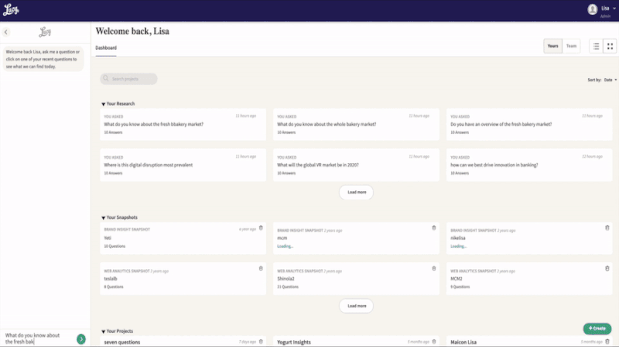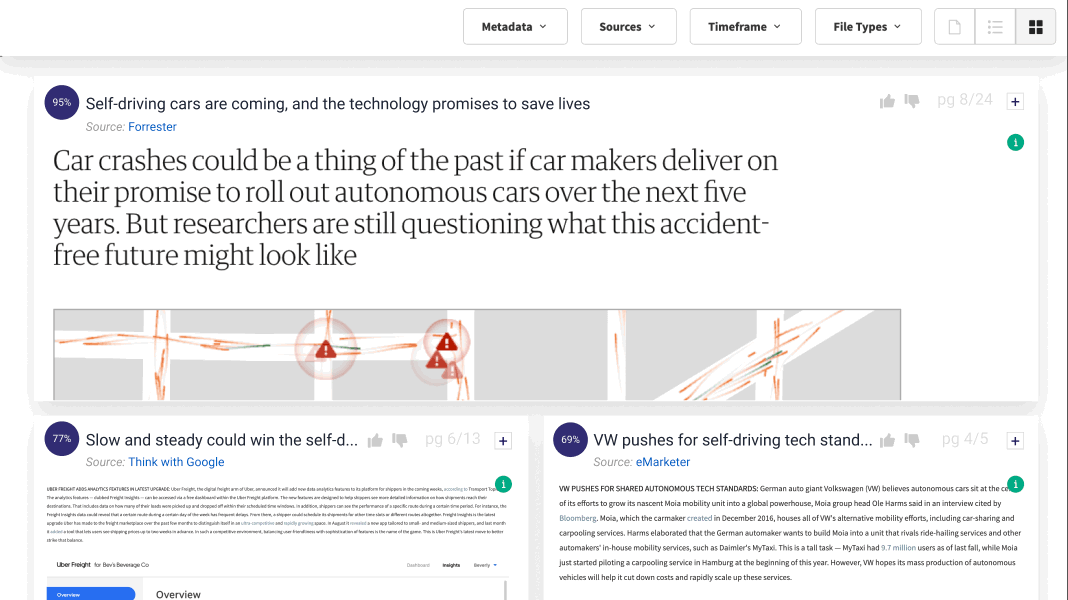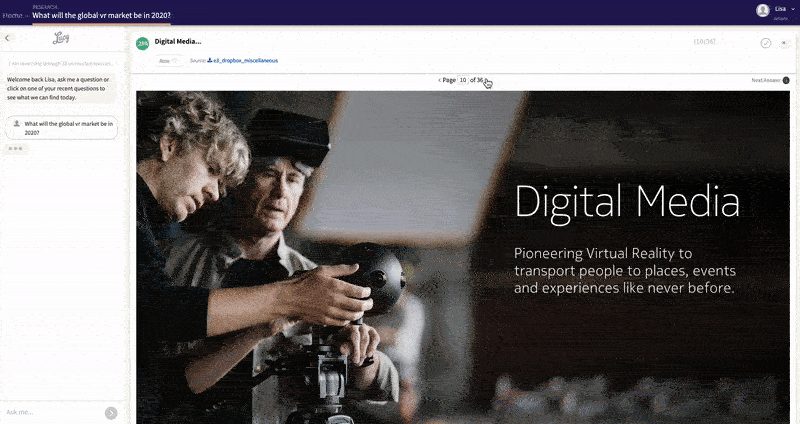We talk with business and IT leaders every day who are actively evaluating generative AI tools for their organizations. While most see the transformative power of these tools, some are still coming to grips with the technology and how to best integrate it into their business.
Here are five mistakes we see companies make when evaluating AI tools – and how your team can avoid them.
- Throwing all AI into one ‘bucket’.
The latest advances in generative AI hit the market fast and hard and brought a slew of new tech terms – GPT, ChatGPT, large language models, and more -- with their arrival. These terms tend to be used interchangeably during discussions, when they actually refer to very separate things. Here are top terms to know:
- Generative AI: A broad term for any type of AI that creates new content -- text, chat responses, images, video, audio, code or synthetic data – based on training of existing data. That data could be public or private.
- Large language model (LLM): An algorithm that generates human-like text by predicting the likelihood of a word given the previous words used in the text. These algorithms often power voice assistants and chatbots. GPT-4, for example, is an LLM developed by Open AI.
- ChatGPT: A specific implementation of generative AI that is available to the public and focused on conversational interactions. ChatGPT is built on an LLM, though not all LLMs are ChatGPT. ChatGPT was created by OpenAI. You can use ChatGPT for free or pay a small fee for additional features. OpenAI also offers an API which enables you to integrate the power of ChatGPT into products and applications.
Understanding the terminology is foundational to making smart technology decisions, especially considering the current dialogue around generative AI regulations and risks. Not all AI is created equal. Just because something leverages a form of generative AI does not mean it carries risk.
2. Misunderstanding public vs. private generative AI.OpenAI’s ChatGPT is trained on vast amounts of publicly available text from the Internet. The generative AI tool enables you to get answers or complete tasks that are based on public data much more quickly. Finding a new taco recipe, writing an article, or putting together a marketing campaign plan based on well-known strategies is a lot easier and faster when you use ChatGPT. The fact that anything ChatGPT creates is based on information that exists somewhere on the Internet, and that the data you put into the prompts can be used for ChatGPT’s data training, is what is raising concerns around copyright issues, accuracy, IP loss, and other risks. While ChatGPT is an incredible tool, and it is smart to safely leverage its capabilities to drive efficiencies, business leaders are wise to institute guardrails and AI policies as it relates to public tools.
There is another side of generative AI that does not come with these risks: Private generative AI. These tools are typically enterprise grade and are focused entirely on the data companies own or license. Employees can get a powerful chat-based search experience while maintaining confidentiality and information security because the models run and are trained on the organization’s own data. These tools are fully logged and managed. There is also a lower risk of inaccuracy and hallucinations because organizations can tell the model not to make up answers if it does not have relevant content for a response.
Public and private tools serve different purposes in the business environment. Understanding the difference and where and when to use each is key for driving efficiency and strategic value.
3. Delaying implementation of the tools they need.Many companies are waiting to invest in anything that uses generative AI until they finalize their policies and guardrails. Safe implementation of AI should be a top priority. Delaying adoption of technology entirely, however, stalls an organization’s ability to solve business problems and drive growth and competitive advantage.
There are many industry and domain-specific tools out there that leverage generative AI as a feature that can be turned on and off depending on an organization’s needs. Instead of delaying implementation, look for solutions that offer this flexibility and enable you to turn generative AI on when you are ready. Every day you wait to adopt the tools you need to run your organization effectively; you are missing out on business value.
Take knowledge management for instance. Technology in this domain drives business value by surfacing the right information employees need to do their jobs – put together proposals, service customers, answer client questions, and more - in seconds vs. hours or days. The daily productivity gains and cost savings are significant. In fact, IDC asserts that “managing organizational knowledge is no longer a nice-to-have benefit” and that there’s a “notable competitive advantage to firms that adopt knowledge management versus those that continue to hold out.” Market leaders are not waiting to turn on generative AI within these tools to start using them and get ROI from their own data and knowledge.
4. Overlooking the value of federated search.
Large enterprises have data that exists across a myriad of sources and departments that often goes unused because employees cannot access it. Applying generative AI on top of your data within one system, which is usually companies’ first instinct, does not maximize IT budgets. Leveraging federated search to search the data across all your systems – ServiceNow, SAP, Salesforce, Dropbox, and Microsoft SharePoint, Azure, Teams, and more – is what maximizes current technology investments.
5. Being too eager to build vs. buy.
Playing around with APIs to build your own tools with generative AI capabilities is exciting – though it is not always sustainable. It can take years to build and tune and requires too much time and resources to maintain a homegrown solution. These solutions also do not always meet user requirements. Packaged solutions can be up and running in 4-6 weeks and are consistently updated with the latest features, so your business stays ahead of the curve. Plus, they come with the added advantage of customer success support, saving your internal IT resources to focus on your core business priorities.
Do not go at it alone
There is a lot for teams to wrap their heads around when it comes to generative AI. A key success factor in the evaluation process is finding the right partner that will guide you through every step and consideration and help you find meaning in your solutions.
Have a question about evaluating generative AI? Ask us here.











